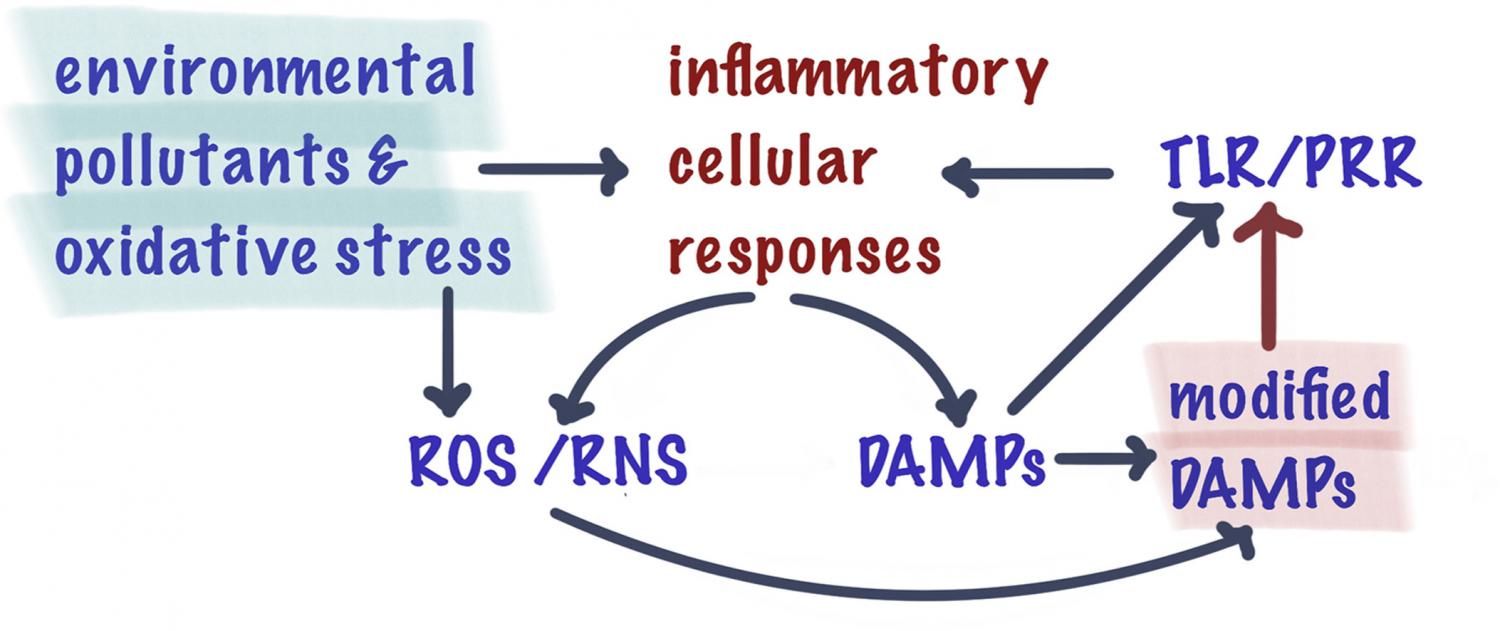
Elsevier, Redox Biology, Volume 37, October 2020
Environmental pollutants like fine particulate matter can cause adverse health effects through oxidative stress and inflammation. Reactive oxygen and nitrogen species (ROS/RNS) such as peroxynitrite can chemically modify proteins, but the effects of such modifications on the immune system and human health are not well understood. In the course of inflammatory processes, the Toll-like receptor 4 (TLR4) can sense damage-associated molecular patterns (DAMPs). Here, we investigate how the TLR4 response and pro-inflammatory potential of the proteinous DAMPs α-Synuclein (α-Syn), heat shock protein 60 (HSP60), and high-mobility-group box 1 protein (HMGB1), which are relevant in neurodegenerative and cardiovascular diseases, changes upon chemical modification with peroxynitrite. For the peroxynitrite-modified proteins, we found a strongly enhanced activation of TLR4 and the pro-inflammatory transcription factor NF-κB in stable reporter cell lines as well as increased mRNA expression and secretion of the pro-inflammatory cytokines TNF-α, IL-1β, and IL-8 in human monocytes (THP-1). This enhanced activation of innate immunity via TLR4 is mediated by covalent chemical modifications of the studied DAMPs. Our results show that proteinous DAMPs modified by peroxynitrite more potently amplify inflammation via TLR4 activation than the native DAMPs, and provide first evidence that such modifications can directly enhance innate immune responses via a defined receptor. These findings suggest that environmental pollutants and related ROS/RNS may play a role in promoting acute and chronic inflammatory disorders by structurally modifying the body's own DAMPs. This may have important consequences for chronic neurodegenerative, cardiovascular or gastrointestinal diseases that are prevalent in modern societies, and calls for action, to improve air quality and climate in the Anthropocene.
